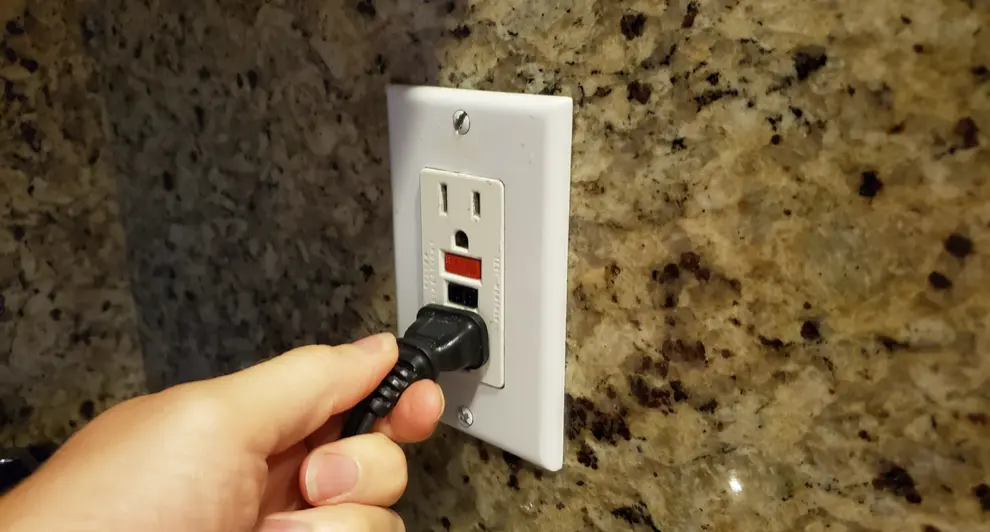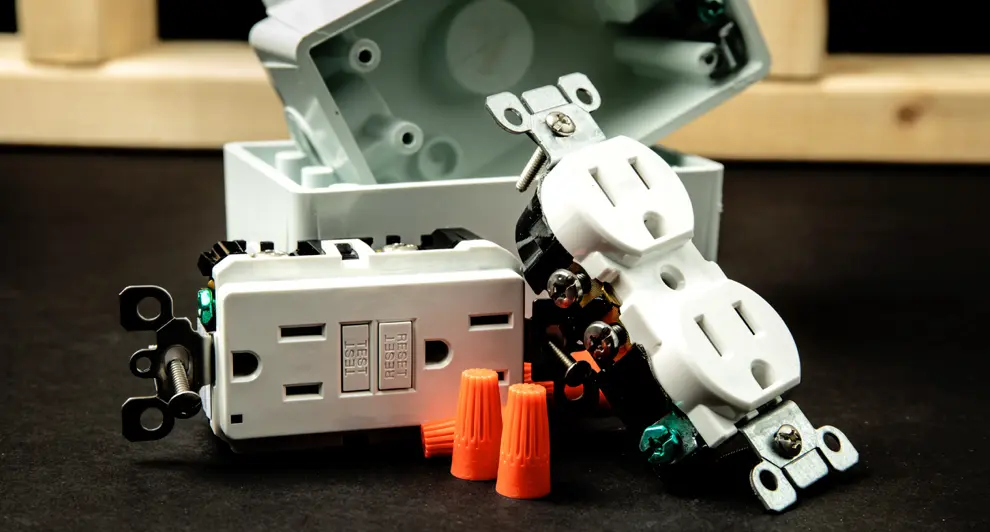
Mr. Electric explains how a GFCI outlet protects against electrical shock by quickly shutting off power when a ground fault is detected.
|
You’ve probably heard the term GFCI outlet, but many homeowners aren’t fully aware of what it is or why it’s necessary in certain rooms. Inexpensive and easily installed, GFCI outlets are critical for electrical safety and are required in today’s homes by the National Electrical Code. So, why are these devices so important? The experts at Mr. Electric® want you to understand why GFCI protection in moisture-prone areas are a must-have.
What is a GFCI Outlet?
GFCI outlets, or ground fault circuit interrupters, are distinct from regular outlets and circuit breakers because they are specifically designed to protect people from electrical shock. GFCI outlets are easily recognizable by the test and reset buttons on the outlet face. While you can add them to any location in your home, they are most commonly installed in areas with water sources, such as kitchens, bathrooms, laundry rooms, and also outdoors.
What Do GFCI Outlets Do?
Designed to prevent electric shock and reduce the risk of electrical fires, GFCI outlets constantly monitor electrical current. When a GFCI outlet detects an imbalance or an excess current flow down an unintended path, it instantly cuts the power by "tripping" the outlet. With a response time that’s far faster than circuit breakers or fuses, GFCIs are built to react before electricity can affect your heartbeat—as quickly as one-thirtieth of a second. The best part? GFCIs will even work in outlets that aren't grounded.
Where Should GFCIs Be Used?
Local building codes require GFCI outlets be installed in certain areas of your home where moisture is common to protect against electric shock. These are the areas where GFCI outlets should be installed:
- Bathrooms
- Kitchens
- Laundry and utility rooms
- Garages and outbuildings
- Crawlspaces and unfinished basements
- Wet bars
- Spa and pool areas
- Outdoor areas
In addition to these required locations, you can and should consider installing GFCI outlets whenever you upgrade your home’s electrical system.

Why are GFCIs a Safer Outlet Option?
Before GFCI outlets were introduced, nearly 800 people died annually from household electrocutions. Thanks to the widespread use of GFCI outlets, this number has dramatically decreased to fewer than 200 deaths annually. But that's not the only benefit—electricity causes more than 140,000 fires, 4,000 injuries, and 400 deaths annually. Imagine how much lower these numbers could be if every home had proper GFCI protection.
GFCI outlets are an absolute must, especially for older homes. Many older homes still use traditional, ungrounded 2-prong outlets, which pose a serious safety risk. GFCI outlets have been required in bathrooms and outdoors since the 1970s, and they're now an essential safety feature that homebuyers and homeowners look for to ensure electrical safety. They help prevent electrical shock, reduce fire hazards, and increase overall safety—making them a critical part of any electrical system.
Half of All American Families Fail to Test GFCI Outlets Properly—Don't Be One of Them
What you don’t know can hurt you. Shockingly, nearly half of all American families fail to test their GFCIs regularly or correctly. How can you avoid becoming one of those statistics? Testing your GFCI outlets is quick and easy. Here’s how:
- Press the test button on the outlet.
- Check to make sure that the electrical flow is cut off by plugging in a nightlight or any small appliance.
- Press reset to restore power to the outlet.
Make sure to test all GFCI outlets in your home at least once a month and always after a storm. If you ever run into an issue with your outlet, check out this helpful guide on what you can do—and what you shouldn’t do if your GFCI doesn’t reset.
Replace Your Traditional Outlets with Help from Mr. Electric
GFCI outlets are an easy and effective way to make your home safer for both your family and visitors. By replacing your old, outdated outlets with GFCI protection, you can drastically reduce the risk of electrical shock. Don’t wait for your old two-prong outlets to fail and leave you vulnerable—schedule service with Mr. Electric to install new GFCI outlets today and safeguard your home. Plus, with our Neighborly Done Right Promise®, we’ll ensure you’ll be happy with our work.
This article is intended for general guidance only and is not applicable to every situation. You are responsible for determining the proper course of action for your property and situation. Mr. Electric is not responsible for any damages that occur as a result of advice and/or guidance derived from its blog content.
Some Mr. Electric services vary by location. Contact your local Mr. Electric franchise for more information.
